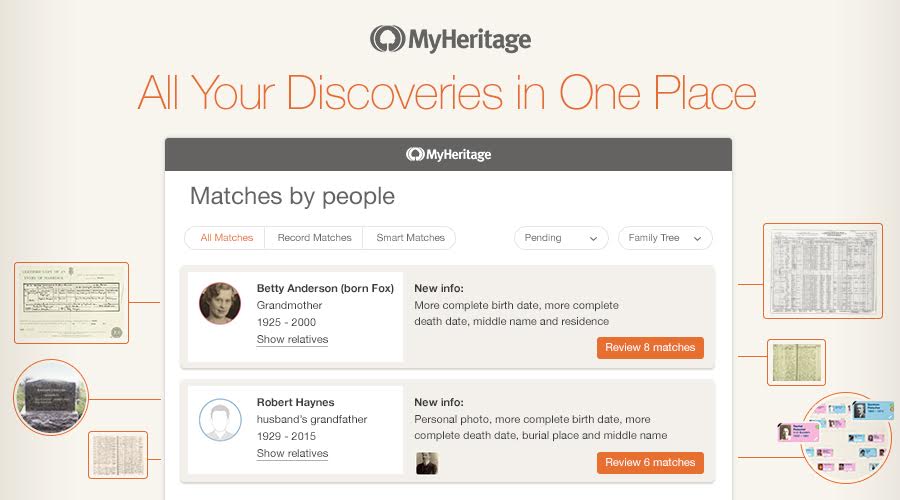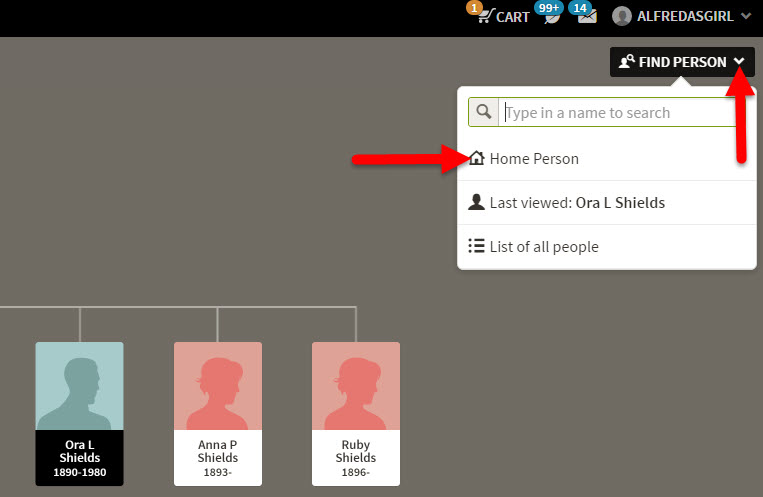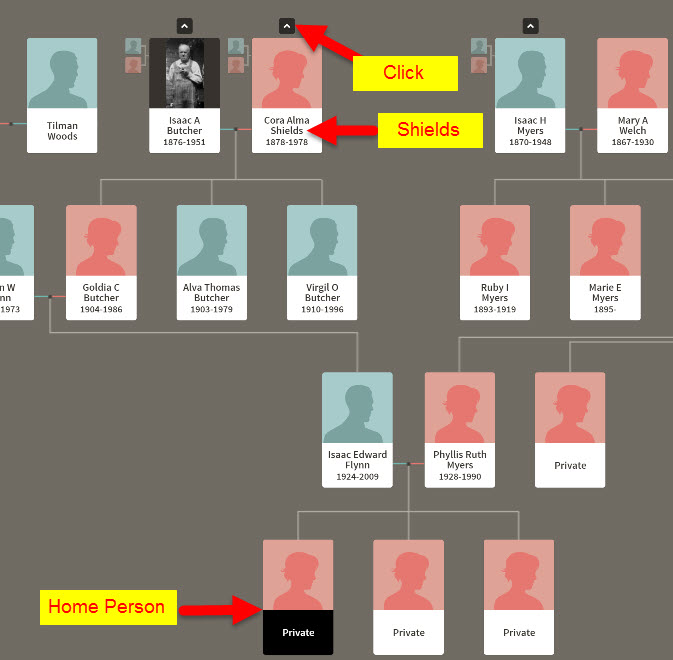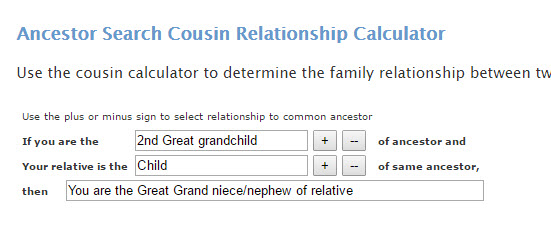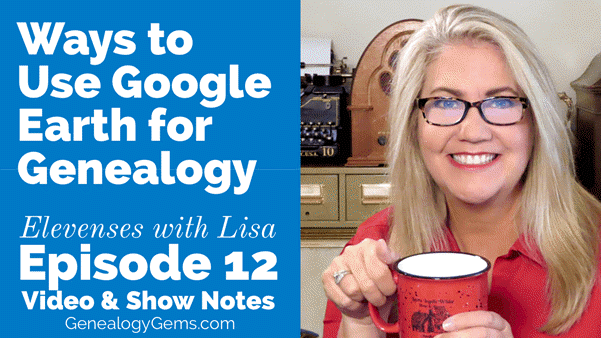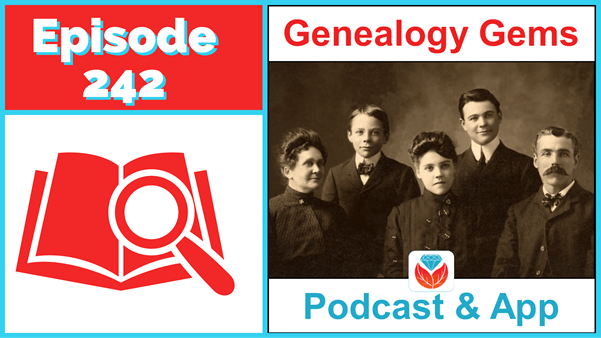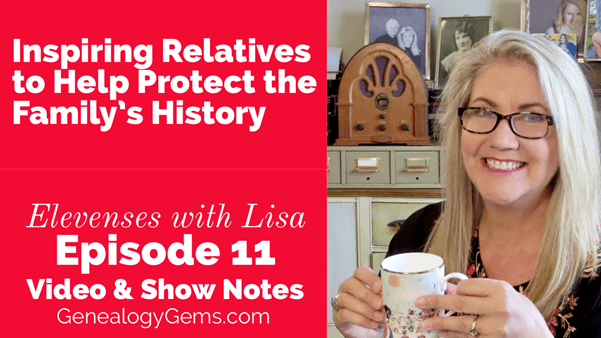by Lisa Cooke | Feb 20, 2017 | 01 What's New, DNA, Kids |
DNA testing for kids is a great way to spark their interest in their heritage, while teaching science, math, geography, and more. Consider these reasons and start with the budget-friendly option of an autosomal test.
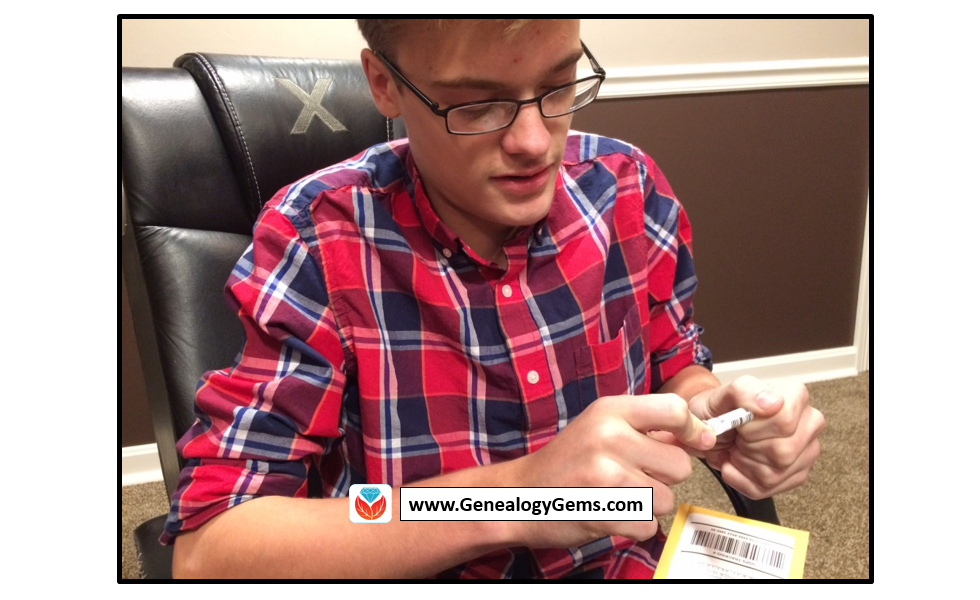
According to a 2010 study out of Emory University, if we want to encourage kids toward an activity that will positively impact them, we should steer them toward family history. The researchers reported, “Children who know stories about relatives who came before them show higher levels of emotional well-being.”
Now, I know I don’t need to convince you of this. You are already sold on genealogy. But let’s explore how DNA testing might be able to help you share your love of family history with your children and grandchildren.
Why Try DNA Testing for Kids
Since you know this is me, the genetic genealogist talking, you can probably guess what I’ll suggest for getting kids interested in family history. DNA testing is a great way to personally and physically involve them. There is the tangible process of taking the sample at home, and the marvel at how such a simple act can produce the amazing display of our ethnicity results. Since each of us is unique, it will be fun for them to compare with you and other relatives to see who-got-what-from-who. This will naturally lead to questions about which ancestor provided that bit of Italian or Irish, and wham! You’ll be right there to tell them about how their 5th great-grandfather crossed the ocean with only the clothes on his back, determined to make a new start in a new land.

If there are parts of the ethnicity report you can’t explain, use that as a hook to encourage them to start digging and to find out why you have that smattering of eastern European or Southeast Asian. Taking them for a tour of the DNA match page, you can show them how they share 50% of their DNA with their sister (whether they like it or not!) and how they share 25% with their grandparent!
DNA test results give kids a totally unique look at their personal identity with technology that is cutting edge. Looking at their DNA test results can turn into a math lesson, a science lesson, a geography lesson, a lesson on heredity or biology, or a discussion on identity. DNA is the perfect introduction to the wonders that genealogy can hold, especially for children.
A Warning and Caution
As with all DNA testing pursuits, this one should not be taken lightly, even with all of its benefits.
An important word to parents: Be sure to keep unintentional consequences in the forefront of your mind. This includes the possibility of revealing family secrets. Talk with your spouse and make sure you are both on the same page. In the end, this is your decision.
An important word to grandparents and other relatives: DNA testing is a parent’s decision. Even though you’re passionate about preserving the family’s history and the benefits of including children are numerous, you must obtain parental consent if you are not the parent.
More About Autosomal DNA Testing for Kids
 Click here to learn more about my series of how-to videos (available to Gems fans for a special price) or start your kids’ or grandkids’ DNA journey with two of my genetic genealogy quick guides. The first is a great overview and the second talks about autosomal testing which is a good test for genetic genealogy beginners.
Click here to learn more about my series of how-to videos (available to Gems fans for a special price) or start your kids’ or grandkids’ DNA journey with two of my genetic genealogy quick guides. The first is a great overview and the second talks about autosomal testing which is a good test for genetic genealogy beginners.
by | Feb 18, 2017 | 01 What's New, Ancestry, Listeners & Readers
Finding living relatives and reuniting lost family treasures is just one way genealogists do random acts of kindness. Our Gems reader has a passion for reuniting photos from eBay to living relatives, but needs to find them first. I have some tips for finding living relatives using Ancestry family trees.

Years go by and dust collects on old photos left on shelves. Sadly, some will choose to sell those once treasured photos on e-bay or at a local flea market. But the good news is there are genealogists who are actively searching for living relatives to reconnect with these pictures of the past.
Finding Living Relatives
A Gems reader recently asked:
I love doing random acts of kindness and when I find photos on eBay and other sites, I love trying to find some family members to enjoy the treasure. There was an email from a listener that I wanted to see if you could expand on for me. She asked who she should contact via Ancestry to ask about a found item. You had great suggestions, but I am hung up on one thing you said.
You said to look at their tree and look at the relationship to the person who created the tree, and the person mentioned in the picture. I would love to do this, but alas, I do not know how.
I have a very specific example right now. I found this listing for Ora Shields barn on eBay this morning. Ora is not my relation, but this would be a neat picture if he were! I looked in Ancestry and found lots of trees for him. I found a couple of people with lots of sources for him, and I always look to see the last time the tree owner logged in. But, what next. I am not sure how to tell how the tree owner is related to Ora. Any suggestions?
P.S. Love your show and now I am addicted to Google Earth thanks to listening to the premium video! Keep the good stuff coming!
Using Ancestry Family Trees for Finding Living Relatives
I’m so glad our Gems are loving Google Earth and our Premium videos! It is wonderful to hear how our Gems Premium Members are using these tools! It is also spectacular that they are seizing the opportunity to help others and I want to help them do that!
I just grabbed a tree on Ancestry that included a person named Ora Shield’s as an example.
Below is the result showing this Ora Shields. If I wanted to find a living relative of this individual, I would take the following steps.
Step 1: Click the down arrow on the name of the tree and click View Tree.
Step 2: Click the down arrow on Find Person and choose Home Person from the pull-down menu.
Step 3: Quickly scan the names and find someone with the last name Shields. In this example, this is the Home Person’s great-grandmother.
Step 4: Click the up arrow above the Home Person’s great-grandma (Cora Shields) to see the Shields’ ancestors.
As you can see, Ora Shields is great-grandma Cora Shield’s brother!
Determine the Relationship
Using this calculator, you can’t specify brother. So, we identify who the direct ancestor is that the Home Person and Ora Shields share. That would be Cora’s parents. Ora is their son and Home Person is their great-great grandchild. Enter that into the calculator and it will tell you how they are related.
Isn’t this an amazing tool? I wish the best of luck to our reader and others who are finding living relatives to reunite with these treasures. And, I love sharing these feel good stories on in our blog and podcasts so thank you, reader, for letting us share your question with our Genealogy Gems.
More on Finding Living Relatives
by Lisa Cooke | Feb 17, 2017 | 01 What's New, Church, Records & databases
Findmypast announces the new catholic church records in their Catholic Heritage Archive this week. This new partnership with British and American Archdioceses will be a monumental help to those searching their early Catholic roots. Also this week, records from Italy and the Netherlands at FamilySearch.
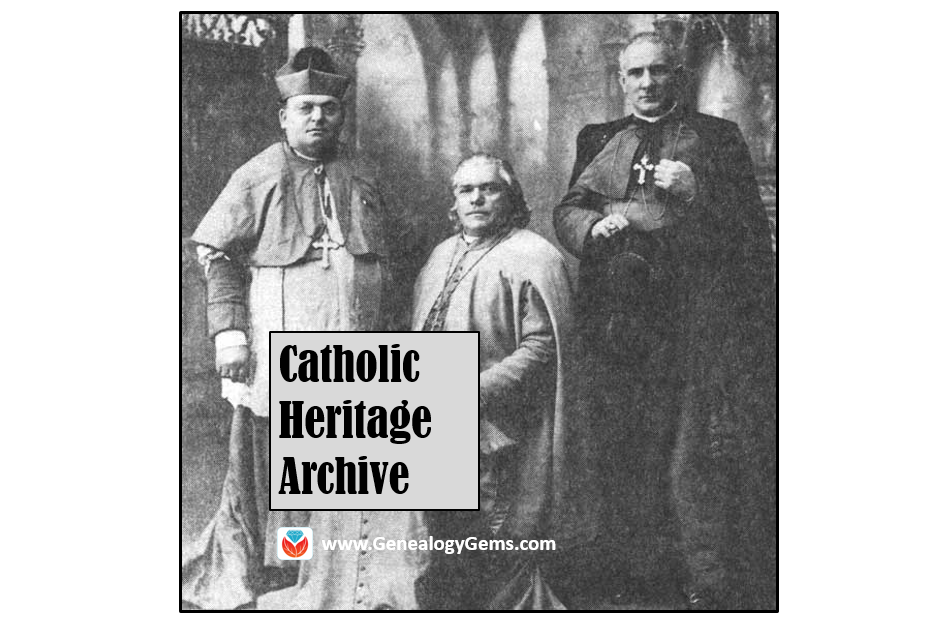
By JakobLazarus (Own work) [CC BY-SA 3.0 (http://creativecommons.org/licenses/by-sa/3.0)], via Wikimedia Commons
Catholic Church Records in the Catholic Heritage Archive
Findmypast announced their new Catholic Heritage Archive this past week. They are releasing over 3 million exclusive records including sacramental registers for the Archdiocese of Philadelphia from 1757 to 1916 as well as for the British Archdioceses of Westminster and Birmingham from 1657 forward. This builds on last year’s publication of more than 10 million Irish Catholic parish registers.
The Catholic Church holds some of the oldest and best preserved genealogical records and in the past, have been difficult to access.
In collaboration with various Archdioceses of the Catholic Church, Findmypast is helping to bring these records online in one unified collection for the first time ever. Exclusively available on Findmypast, images of original documents will be completely free to view in many cases. Fully searchable transcripts will also be included, providing family historians from the around the world with easy access to these once closely guarded records.
Click “Play Now” below to listen to Sunny Morton’s brief interview with Findmypast about the announcement: [display_podcast]
The next phase of the Catholic Heritage Archive will include records from the archdioceses of New York and Baltimore as well as additional records from Philadelphia. There are over 30 million records in just these three dioceses. The digitization of the whole archive is a monumental undertaking and, when complete, will contain hundreds of millions of records for the USA alone.
Catholic Heritage Archive Holdings for This Week:
United States – Pennsylvania – Philadelphia – Baptisms
The Philadelphia Roman Catholic Parish Baptisms at Findmypast are the first of these record releases from an agreement made with the Roman Catholic Church to digitize their records. These baptismal records will include a name, their parent’s names, and residence at the time of the event.
Additional information may include place of birth, sponsors, minister who performed the ceremony, and notice of marriage. Catholic priests were charged with noting all vital events of their parishioners. If, for instance, a parishioner married outside her home parish, the priest who performed the marriage would contact her priest to confirm she was baptized and to share the details of her marriage, hence the marriage notice in the baptism register.
United States – Pennsylvania – Philadelphia – Marriages
You can now view a transcript and an image of your ancestor’s marriage register from the Archdiocese of Philadelphia in this collection titled Philadelphia Roman Catholic Parish Marriages from Findmypast.
Information contained in these records include the couple’s names, marriage date and location, and you may find dates and locations of the couples’ baptisms.
All Philadelphia Roman Catholic Parish records are from the Archdiocese of Philadelphia, covering Bucks County, Chester County, Delaware County, Montgomery County, and Philadelphia County.
England – Westminster – Roman Catholic Census
Another Catholic records resource from Findmypast includes the Westminster Roman Catholic Census 1893. As well as the typical information you would expect from a census (occupation, address, birth year, etc.), notes detailing the local priest’s opinion on your ancestor’s faith and dedication to the church let you find out if your ancestor was a good or bad Catholic. Scandalous!
England – Birmingham & Westminster – Roman Catholic Church & Parish Records
Four separate collections, also in the Catholic Heritage Archive at Findmypast, include Roman Catholic baptismal, burial, marriage, and congregational records for locales in England. The records released this week are for the areas covering the Birmingham and Westminster archdioceses. The amount of information in each of these record sets will vary on the age of the record, legibility, and the amount of information recorded by the parish priest. You will find both a transcription and a digital image of the record.
England Roman Catholic Parish Baptisms
England Roman Catholic Parish Burials
England Roman Catholic Parish Marriages
England Roman Catholic Parish Congregational Records
United States – Pennsylvania – Vital Records
Provided by the Historical Society of Pennsylvania, Findmypast brings you a large collection of vital records. The first is titled Historical Society of Pennsylvania, Births & Baptisms. These records include images from a variety of sources spanning years from the late 1600s to the mid 1900s.
It is important to note this may not be the only place to find births or baptisms—and there may be records included that are not births or baptisms in this material from the Historical Society of Pennsylvania.
The Historical Society of Pennsylvania, Deaths & Burials collection will include records that may contain the following information: decedent’s name, date of death and burial, parish and diocese, and could include additional information such as military service, age, and birth date.
The Historical Society of Pennsylvania, Marriages collection is also a helpful group of records and include marriage records ranging from the early 1600s to the late 1900s. You can view a transcript and the original image.
United States – Pennsylvania – Congregational Records
The Historical Society of Pennsylvania, Congregational Records is a unique collection that may give you insight into your ancestor and the church they attended. Not only will images include lists of past ministers, but you may find additional lists of those persons baptized and confirmed. Some of these records may also be used as a source to discover the names of your ancestor’s parents and spouses.
United States – Pennsylvania – WWII Records

Screenshot from Findmypast of the Historical Society of Pennsylvania, WWII Casualty Cards.
The Historical Society of Pennsylvania, Word War II Casualty Cards collection is a group of records created by the Army so if something happened to a local soldier, the newspaper wouldn’t have to scramble for information. These records are particularly relevant in light of the fire at the National Archives and Records Administration in the 1970s when most World War II personnel files were destroyed.
Netherlands – Miscellaneous Records
We have brought you many collections from Findmypast, which require a subscription. However, these next few collections are brought to you by FamilySearch and are free to access.
Netherlands, Archival Indexes, Miscellaneous Records collection has been updated this week at FamilySearch. These records include many record sources, such as civil registration, church records, emigration lists, military registers, and land and tax records. These records cover events like birth, marriage, death, burial, emigration and immigration, military enrollment, and more. These indexes were originally collected, combined and published by OpenArchives. For the entire index collection and more information visit www.openarch.nl.
Italy – Trapani, Civil Registration
FamilySearch brings you updates to the Italy, Trapani, Civil Registration (State Archive), 1906-1928 collection. This collection consists of civil registration of births, marriages, and deaths within the custody of the State Archive of Trapani. Availability of records is largely dependent on time period and locality. This collection of civil registrations records covers the years 1906-1928 and may also include:
- Residency records
- Marriage banns
- Indexes
- Marriage supplements
- Miscellaneous records
Learn More about Institutional Records Research
 From schools and orphanages to prisons, hospitals, asylums, workhouses, and more, there’s a good chance one or more of your ancestors might be found on record in one of the many types of institutions. In this Premium eLearning video, Institutional Records Research Methods, Lisa Louise Cooke presents methods for finding your ancestors in institutional records, from establishing a workflow and investigating clues found in the census and other records to resources and strategies for digging up the records. This 40-minute video includes a downloadable handout and is available right now to all Premium eLearning members. Click here to sign up!
From schools and orphanages to prisons, hospitals, asylums, workhouses, and more, there’s a good chance one or more of your ancestors might be found on record in one of the many types of institutions. In this Premium eLearning video, Institutional Records Research Methods, Lisa Louise Cooke presents methods for finding your ancestors in institutional records, from establishing a workflow and investigating clues found in the census and other records to resources and strategies for digging up the records. This 40-minute video includes a downloadable handout and is available right now to all Premium eLearning members. Click here to sign up!
by Lisa Cooke | Feb 16, 2017 | 01 What's New, Genealogy TV, Who Do You Think You Are? |
TLC’s Who Do You Think You Are? is back with eight new one-hour episodes bringing more unexpected turns, and surprising discoveries of great historical significance. Read more to find out who you’ll see and some of the hidden family secrets revealed.

7th Season of WDYTYA
Communists, secret agents, and abolitionists are just a few of the family secrets uncovered in this season of Who Do You Think You Are. The line-up of celebrities include:
Jessica Biel making a surprising discovery that changes what she thought knew about her heritage.
Julie Bowen, of Modern Family, uncovers the story of two relatives whose moral codes are from opposite ends of the spectrum.
Courteney Cox will trace her maternal line back seven centuries to the Medieval times to discover royalty in her lineage and an unbelievable tale of family drama.
Jennifer Grey uncovers new information about the grandfather she thought she knew, learning how he survived adversity to become a beacon of his community.
Smokey Robinson searches for answers behind the mystery of why his grandfather disappeared from his children’s lives, and finds a man tangled in a swirl of controversy.
John Stamos digs into the mystery of how his grandfather became an orphan, and learns of tensions between families that led to a horrible crime.
Liv Tyler learns that her family is tied into the complicated racial narrative of America.
Noah Wyle unravels the mystery of his maternal line, uncovering an ancestor who survived one of America’s bloodiest battles.
Tune in on Sunday, March 5th, 2017 10/9c and be a part of their journeys. Also, you can enjoy this sneak peak in the video below:
Sharing Your Own WDYTYA Experience
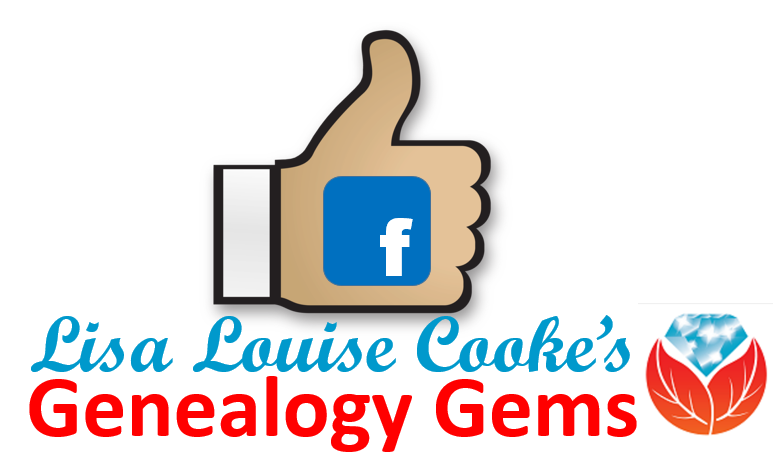 Have you recently found an amazing discovery that has altered how you feel about your family’s history? We would love to hear about your experiences on our blog, here in the comments section, or on our Facebook page. After all, everyone has a story to tell.
Have you recently found an amazing discovery that has altered how you feel about your family’s history? We would love to hear about your experiences on our blog, here in the comments section, or on our Facebook page. After all, everyone has a story to tell.
And speaking of telling your story, Sunny Morton’s new book can help you do just that. It includes:
- fill-in pages with thought-provoking prompts to capture key moments that define your life
- Advice and exercises to reconstruct memories from long ago
- Interactive pages for family and friends to share their own stories
- Special forms for spotlighting important people, places and times.
Get Story of My Life by Sunny Jane Morton.
Disclosure: This article contains affiliate links and Genealogy Gems will be compensated if you make a purchase after clicking on these links (at no additional cost to you). Thank you for supporting Genealogy Gems!



 Click here to learn more about my series of how-to videos (available to Gems fans for a special price) or start your kids’ or grandkids’ DNA journey with two of my genetic genealogy quick guides. The first is a great overview and the second talks about autosomal testing which is a good test for genetic genealogy beginners.
Click here to learn more about my series of how-to videos (available to Gems fans for a special price) or start your kids’ or grandkids’ DNA journey with two of my genetic genealogy quick guides. The first is a great overview and the second talks about autosomal testing which is a good test for genetic genealogy beginners.
